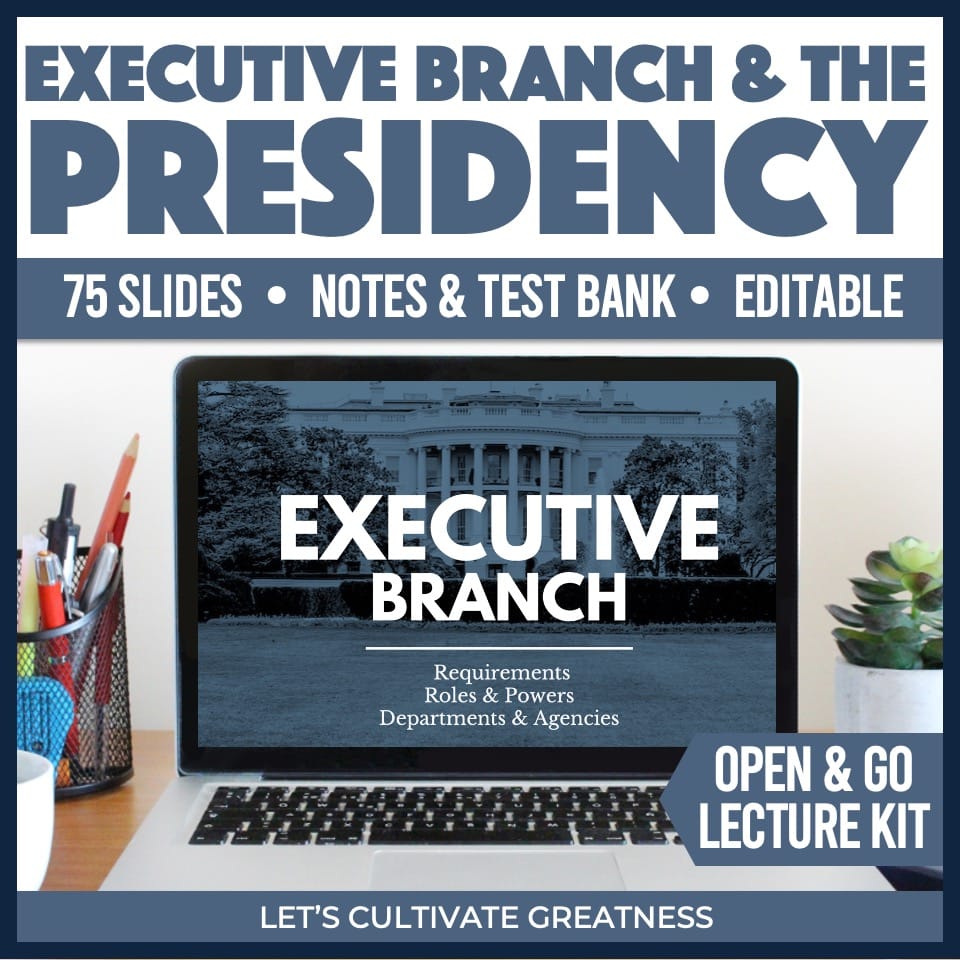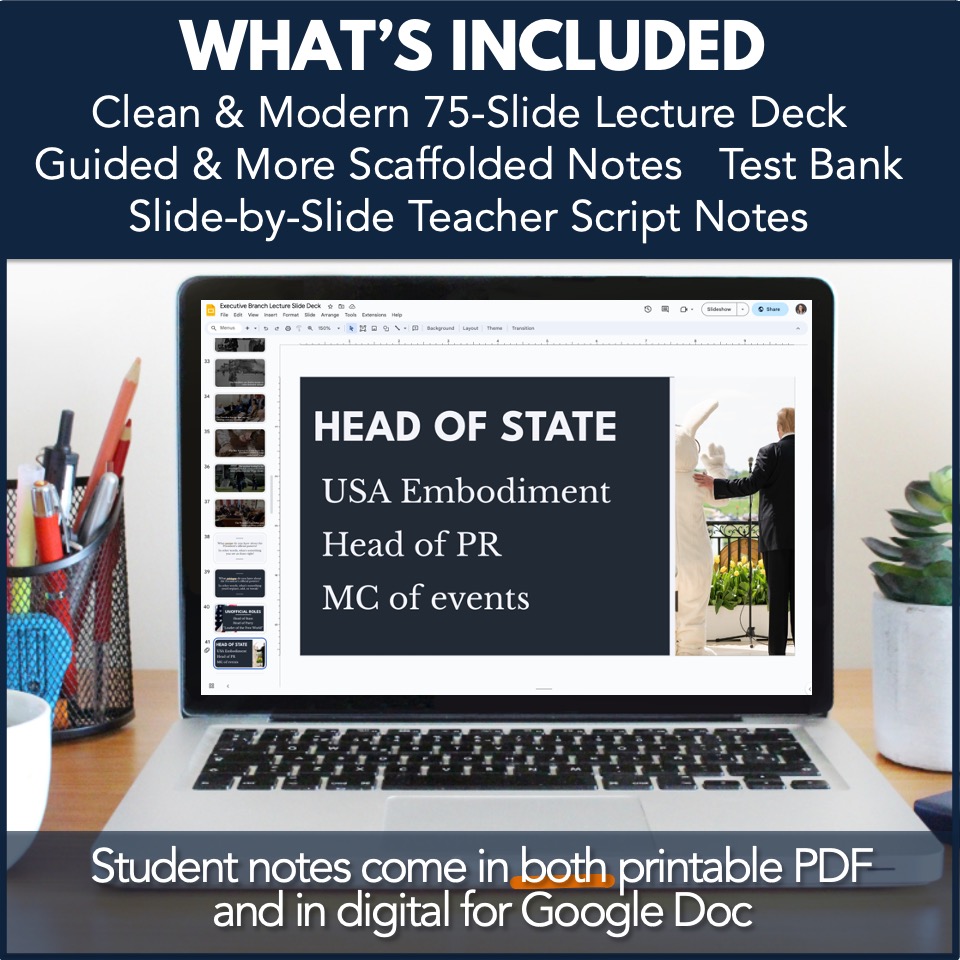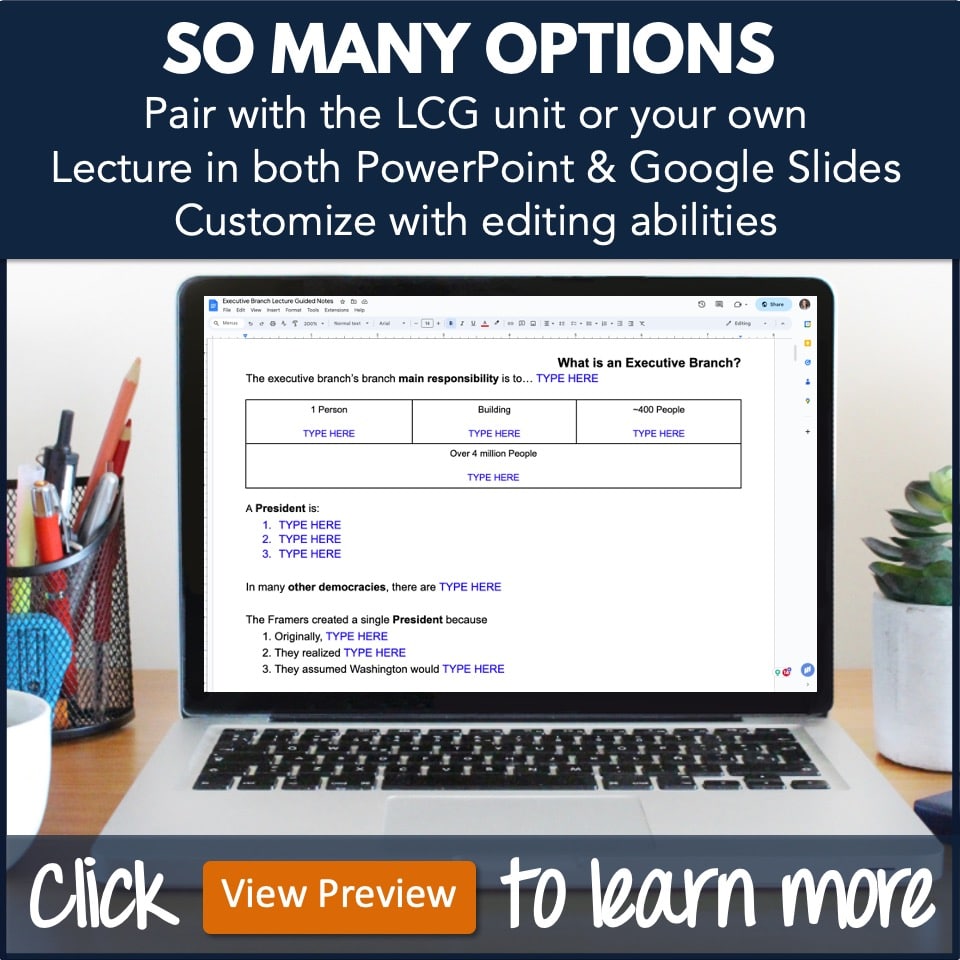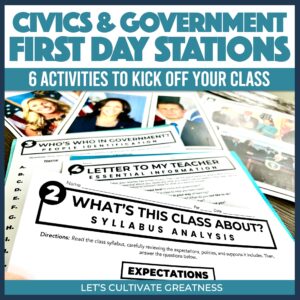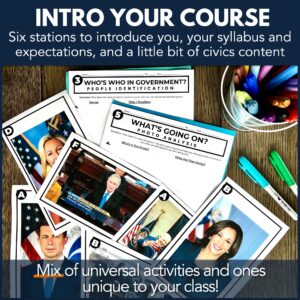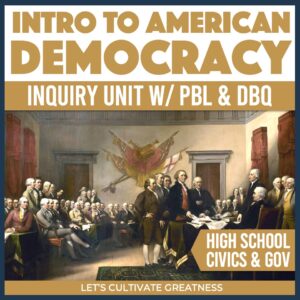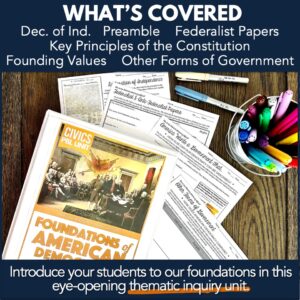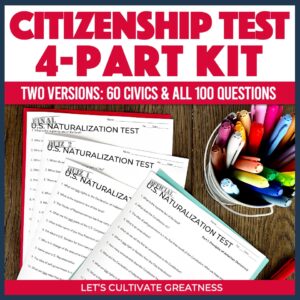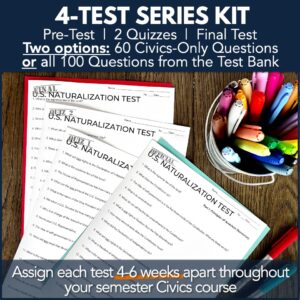Executive Branch Lecture & Notes Kit
$6.00
Confidently teach the executive branch and the powers of the President with this complete lecture kit.
It comes with ready-to-go guided notes, a test question bank, and a slide-by-slide teacher script.
Description
If you’re brand new to Civics or need to upgrade what you have, this is ready-to-go and fully loaded for you!
Challenge your students to see the why and how of this largest branch of government, including how its day-to-day operations don’t necessarily match with the Framers’ intentions, with this slide deck kit.
Here’s what’s included in this complete Executive Branch Lecture Kit:
75-Slide Lecture
- Clean, modern look in Google Slides (one-click download to PowerPoint)
- Extensive teacher script on every slide
- Embedded animations to focus attention
- “Pause and Talk” reflection & processing questions at the end of each segment
2 Differentiated Versions of Accompanying Notes
- 5-Page guided notes for on-level students
- 5-Page more scaffolded fill-in-the-blank notes for support students
- Print PDF and Google Doc files of both sets
- Answer key included too!
50+ Question Test Bank
- Easily copy/paste questions to build quizzes and formative checks natively into your LMS or other platform
- Fill-in-the-blank, matching, short-answer, and open-ended questions included
- Answer key included too!
This lecture covers:
- Founders’ intentions with creating a single President
- Job qualifications & the debate over “natural-born” requirement
- 22nd Amendment & term limits
- Comparison with other countries’ leader set-ups
- Official roles:
– Head of Government — appointments, budget, State of the Union
– Chief Diplomat — treaties, UN & G7 meetings, Logan Act
– Commander in Chief — undeclared wars & the Wars Power Act, military attacks, the nuclear football - Unofficial roles:
– Head of State — State diner, Presidential Medal of Freedom, Easter Egg Roll
– Head of Party — campaigning for other candidates
– World Leader — UN Security Council member, world treaties, international policies - Expressed Presidential powers:
– Signing/vetoing bills
– Granting pardons
– Appointing federal judges - Implied Presidential powers:
– Executive orders
– Executive agreements
– Executive privilege - Role & Duties of the Vice President
- Role and members of the Cabinet
- 25 executive departments and agencies
- Illustrative recent & historical examples of all topics
This resource is 75 slides, 12 PDF pages, plus Google files.
What grades is this intended for?
This was designed for high school.
What supports are included? How can I modify this?
Lecture slides each have extensive notes/teacher scripts. Guided notes come in two formats, one with added scaffolding.
Google versions of student materials and lecture slides are editable to tailor for your students’ needs.
Can I use this in a homeschooling setting?
Sure! While a lecture tends to imply a large-group setting, these slides can still just as easily be used for self-paced independent learning.
Is this editable? What file types does this resource come in?
The lecture slides have editable text fields, but the backgrounds are secured. The slide deck is a Google Slides file that can be easily downloaded as a PPT.
The guided notes come in both a secured, non-editable PDF file intended to be printed and an editable Google file.
The test bank is an editable Google file to allow you to copy and paste questions to form your own assessments natively into your LMS.
What standards does this address?
Several! Standards vary, but this resource supports these from various states:
- Analyze the structure and functions of the executive branch of government, including presidential powers and the role of the Cabinet and executive departments
- Examine the relationship the executive branch has with the other branches, including checks it has on the other branches
- Describe the official and unofficial roles of the office of the President; explain the qualifications needed for the job
- Describe the enumerated and implied powers of the office of the President
- Explain the role of the Cabinet and executive departments in advising the President and carrying out their orders
What are the terms of use for this resource?
This resource, including all ancillary files, may be used as needed for regular, non-commercial single-classroom use between a teacher and their students.
This includes printing copies and sharing digital files with students through a secure platform, like Google Classroom or Canvas, email, or a classroom-only shared drive.
The using and sharing of any part of this resource in any manner outside the above-mentioned capacity is strictly prohibited. Prohibited uses include, but are not limited to,
- posting files on the open internet or in a Facebook group
- emailing files to or sharing print copies with others (without purchasing additional licenses)
- uploading or storing files in a shared cloud drive accessible by anyone other than students
- including any part, or any derivative work, within any commercial endeavor like curriculum development, professional training, or for-profit teaching like Outschool, or selling this resource as your own in either print or digital formats
Doing so violates the Digital Millennium Copyright Act (DMCA), copyright law, and these terms.
By downloading this resource from Let’s Cultivate Greatness, the original user has been granted one license for a single teacher (or number of teachers matching the number of licenses purchased) and their students at any one time.
Let’s Cultivate Greatness retains the full copyright of this resource.

